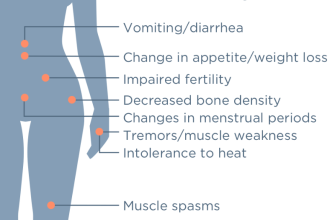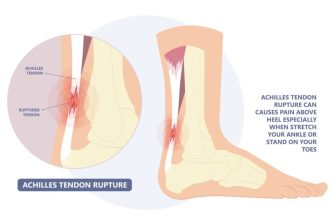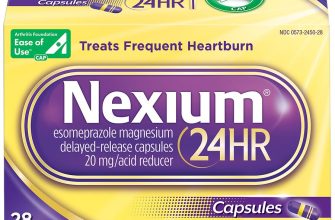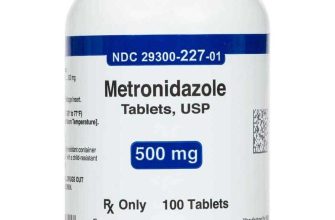Administering theophylline 100mg to your dog requires careful consideration and should always be done under veterinary guidance. This isn’t a decision to make independently. Dosage is highly dependent on your dog’s weight, breed, and the specific condition being treated. Never attempt to self-treat your pet.
Your veterinarian will determine the appropriate dosage and frequency based on a thorough examination and bloodwork. They’ll monitor your dog’s response to the medication closely, adjusting the dosage as needed to achieve therapeutic levels while minimizing potential side effects. This might involve regular blood tests to check theophylline levels.
Potential side effects include vomiting, increased urination, restlessness, and heart rhythm changes. Immediate veterinary attention is crucial if you observe these symptoms. Safe storage is also paramount; keep theophylline out of reach of children and other pets. Proper medication management safeguards your dog’s well-being.
Remember, this information is for educational purposes only and does not substitute professional veterinary advice. Always consult your veterinarian before giving your dog any medication, including theophylline. They can provide personalized recommendations tailored to your dog’s unique needs and health status. Your vet is your best resource for safe and effective pet care.
- Theophylline 100mg for Dogs: A Comprehensive Guide
- What is Theophylline and How Does it Work in Dogs?
- Common Canine Conditions Treated with Theophylline 100mg
- Dosage and Administration of Theophylline 100mg for Dogs
- Potential Side Effects and Risks of Theophylline 100mg in Dogs
- Drug Interactions with Theophylline 100mg in Dogs
- Monitoring Your Dog During Theophylline 100mg Treatment
- When to Consult a Veterinarian Regarding Theophylline 100mg
- Monitoring Your Dog’s Response
- Signs of Theophylline Toxicity
- Changes in Your Dog’s Condition
Theophylline 100mg for Dogs: A Comprehensive Guide
Always consult your veterinarian before administering theophylline to your dog. Dosage depends heavily on your dog’s weight, breed, and specific health condition. A 100mg tablet is not a universal dose.
Theophylline treats canine asthma and chronic bronchitis by relaxing airway muscles. It’s often prescribed as a long-term medication. Expect your vet to monitor theophylline levels in your dog’s blood regularly through blood tests. This ensures the medication is working effectively and safely.
Common side effects include vomiting, increased urination, restlessness, and heart rhythm changes. Report any unusual behavior or symptoms to your vet immediately. These side effects can be managed with dose adjustments or other medications in some cases.
Store theophylline in a cool, dry place away from children and pets. Never give your dog more theophylline than prescribed. Overdosing can be dangerous and even fatal. Keep the medication in its original container with the label intact for clear identification.
Theophylline interacts with certain medications. Inform your vet of all other medications, supplements, or herbal remedies your dog is taking. This information is vital for safe and effective treatment. Some interactions can lead to increased risk of side effects or reduced medication efficacy.
Expect your vet to create a personalized treatment plan. This includes regular check-ups and blood tests to monitor your dog’s response to the medication and make necessary adjustments. Active participation in this plan is key to successful theophylline therapy.
Remember, this information is for educational purposes only and doesn’t substitute professional veterinary advice. Always follow your veterinarian’s instructions precisely.
What is Theophylline and How Does it Work in Dogs?
Theophylline is a medication belonging to a class of drugs called methylxanthines. It acts as a bronchodilator, meaning it relaxes and opens the airways in the lungs. This helps improve breathing in dogs experiencing respiratory distress.
In dogs, theophylline primarily works by inhibiting phosphodiesterase, an enzyme that breaks down cyclic adenosine monophosphate (cAMP). Increased cAMP levels relax bronchial smooth muscles, widening the airways. It also possesses mild anti-inflammatory properties, potentially reducing airway inflammation.
The medication is commonly prescribed to manage chronic obstructive pulmonary disease (COPD), bronchitis, and asthma in dogs. Your veterinarian will determine the appropriate dosage based on your dog’s weight, age, and specific condition. Always follow their instructions carefully.
Important Note: Theophylline has a narrow therapeutic index, meaning the difference between a therapeutic dose and a toxic dose is small. Regular blood tests are often required to monitor theophylline levels and ensure the dog is receiving a safe and effective dose. Side effects can include vomiting, diarrhea, restlessness, and increased heart rate. Contact your veterinarian immediately if you notice any unusual behavior or symptoms in your dog.
Remember: This information is for educational purposes only and does not constitute veterinary advice. Always consult with your veterinarian before administering any medication to your pet.
Common Canine Conditions Treated with Theophylline 100mg
Theophylline 100mg is often prescribed for specific canine respiratory issues. Its bronchodilating properties make it a useful tool in managing several conditions.
- Chronic Bronchitis: Theophylline helps relax airway muscles, improving airflow and reducing coughing associated with chronic bronchitis. Dosage and administration must follow veterinary guidance.
- Asthma: Similar to bronchitis, theophylline can ease breathing difficulties in dogs with asthma by widening the airways. Regular veterinary check-ups are vital for monitoring treatment effectiveness.
- Coughing of Unknown Origin (CUE): If a dog exhibits persistent coughing without an apparent cause, theophylline may be used as part of a diagnostic and treatment plan. Additional tests are usually needed to confirm the underlying problem.
- Reverse Sneezing: While not a primary treatment, theophylline can sometimes help manage the underlying respiratory irritation contributing to reverse sneezing episodes in some dogs. This is usually only considered alongside other treatments and veterinary consultation.
Remember: Theophylline 100mg, like any medication, requires careful monitoring. Always follow your veterinarian’s instructions for dosage, administration, and potential side effects. Regular blood tests can be necessary to monitor the drug’s levels in the dog’s system. Never administer medication without prior veterinary assessment and prescription.
- Blood tests: These regularly check for proper theophylline levels in the blood to prevent toxicity and ensure therapeutic effects.
- Careful monitoring for side effects: These may include vomiting, increased thirst, restlessness, or changes in heart rate. Immediate veterinary attention is needed for any significant side effects.
Dosage and Administration of Theophylline 100mg for Dogs
Never administer theophylline without veterinary guidance. Dosage is strictly individualized based on your dog’s weight, breed, and specific condition. A veterinarian will determine the appropriate dose and frequency.
Theophylline 100mg tablets are often crushed and mixed with food to improve palatability. Follow your vet’s instructions carefully regarding administration methods. Some dogs may readily accept the medication, while others might require more coaxing.
Typical dosages range from 2 to 5 mg/kg, administered twice daily. However, this is a broad guideline. Your vet will calculate the precise dose for your dog. Overdosing is possible and can be dangerous, so precise measurement is critical.
Regular blood tests are frequently recommended to monitor theophylline levels in your dog’s bloodstream. This ensures the medication is working effectively and safely. Report any adverse effects, such as vomiting, tremors, or restlessness, to your veterinarian immediately.
Store theophylline tablets in a cool, dry place, away from children and pets, as directed on the packaging. Always follow your vet’s instructions on how to store the medication and for how long it remains potent. Discard expired medication properly.
Consistent administration is key to successful treatment. Maintain a routine to ensure your dog receives the medication at the prescribed times.
Potential Side Effects and Risks of Theophylline 100mg in Dogs
Theophylline, while effective, carries potential side effects. Monitor your dog closely for any adverse reactions. Dosage is crucial; always follow your veterinarian’s instructions precisely.
Common side effects include vomiting, diarrhea, restlessness, and increased urination. Less frequent, but still possible, are tremors, seizures, and rapid heart rate. Severe reactions are rare, but require immediate veterinary attention.
Certain factors increase the risk of side effects. Smaller breeds may be more sensitive. Kidney or liver disease can impact theophylline’s metabolism and increase the chance of toxicity. Concurrent medications can interact, affecting theophylline’s efficacy and safety.
| Side Effect | Frequency | Action |
|---|---|---|
| Vomiting, Diarrhea | Common | Contact your veterinarian; may require dose adjustment or medication change. |
| Restlessness, Increased Urination | Common | Monitor; may resolve on its own or require minor dose adjustment. |
| Tremors, Seizures, Rapid Heart Rate | Less Common | Seek immediate veterinary care; this indicates potential overdose or adverse reaction. |
Regular blood tests are often recommended to monitor theophylline levels and ensure they remain within the therapeutic range. This minimizes the risk of both ineffective treatment and adverse reactions. Open communication with your veterinarian is vital for safe and effective theophylline administration.
Drug Interactions with Theophylline 100mg in Dogs
Theophylline’s effects can be significantly altered by other medications. Avoid concurrent use with cimetidine, erythromycin, or fluoroquinolones. These drugs inhibit theophylline metabolism, potentially leading to dangerously high theophylline levels and toxicity. Symptoms of theophylline toxicity include vomiting, tremors, seizures, and cardiac arrhythmias.
Similarly, drugs that induce liver enzymes, such as barbiturates and phenytoin, can accelerate theophylline breakdown, reducing its effectiveness. This requires close monitoring and potential dose adjustments.
Beta-blockers may also interact with theophylline, potentially diminishing the bronchodilating effect. Always inform your veterinarian about all medications your dog is taking, including over-the-counter products and supplements.
Some diuretics, like furosemide, can increase the risk of theophylline toxicity by promoting its excretion. Conversely, drugs that reduce urine output might increase theophylline levels. Regular blood tests to monitor theophylline concentrations are highly recommended, especially when combined with other drugs.
Monitoring Your Dog During Theophylline 100mg Treatment
Regular monitoring is crucial for your dog’s safety and treatment success. Schedule veterinary check-ups as directed by your vet. These appointments allow for blood tests to measure theophylline levels and check for potential side effects.
Pay close attention to your dog’s behavior and physical condition between visits. Look for these warning signs:
- Vomiting
- Diarrhea
- Loss of appetite
- Restlessness or agitation
- Increased urination or thirst
- Tremors or shaking
- Rapid heart rate
- Difficulty breathing
Maintain a detailed record of your dog’s medication administration, including dates, times, and dosages. Note any observed changes in behavior or physical condition. This information will be invaluable for your veterinarian.
Follow your veterinarian’s instructions precisely. Never adjust the dosage or frequency of the medication without consulting your vet first. Even small changes can have significant consequences.
- Keep theophylline tablets out of your dog’s reach. Accidental ingestion can be dangerous.
- Store the medication in a cool, dry place as indicated on the packaging.
- Discuss potential drug interactions with your vet if your dog is taking other medications.
Promptly report any of the above symptoms to your veterinarian. Early detection and intervention can help prevent serious complications.
When to Consult a Veterinarian Regarding Theophylline 100mg
Contact your veterinarian immediately if your dog exhibits any of the following symptoms after receiving Theophylline 100mg: vomiting, restlessness, increased urination, tremors, or seizures. These can indicate an adverse reaction or overdose.
Monitoring Your Dog’s Response
Schedule a follow-up appointment with your vet to monitor your dog’s response to Theophylline within a week of starting treatment. Regular blood tests may be necessary to check Theophylline levels and adjust dosage as needed. This ensures the medication is working effectively and safely.
Signs of Theophylline Toxicity
Seek immediate veterinary care if you observe rapid heart rate, difficulty breathing, or collapse. These are serious signs of Theophylline toxicity and require prompt intervention. Don’t delay; your dog’s health is paramount.
Changes in Your Dog’s Condition
Report any unexpected changes in your dog’s behavior or health, even seemingly minor ones, to your veterinarian. This includes alterations in appetite, energy levels, or bowel movements. Early detection allows for timely adjustments to the treatment plan. Your vet will advise on appropriate next steps.







